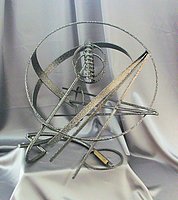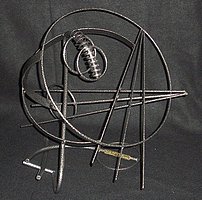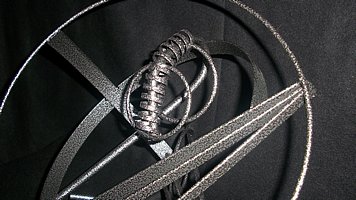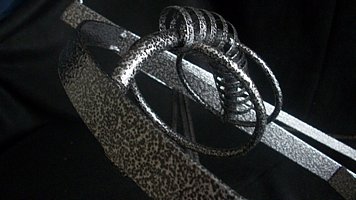MATHEMATICS
By Gilbert McCann: Metal Sculptor
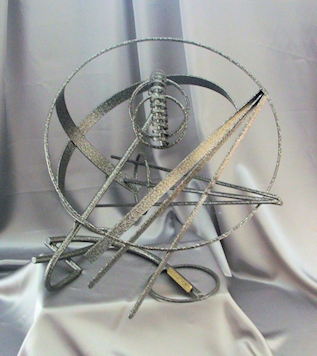
As I began my work on "Mathematics" I thought it to be a discipline dominated by computation and rules. But as the piece began to grow I quickly saw many different aspects of this topic. Shapes appeared (lines and circles). Negative and positive spaces were created. I began to question what the topic mathematics really meant. So I began a study of its definition. Here is what I found.
There are many different definitions of mathematics. All are controversial and there is no consensus.
Aristotle defined mathematics as: The science of quantity. This definition was abandoned in the 19th century as new branches of mathematics were developed.
Most reference works define mathematics mainly by summarizing its main topics and methods:
The study of the measurement, properties, and relationships of quantities and sets, using numbers and symbols. American Heritage Dictionary, 2000
The science of structure, order, and relation that has evolved from elemental practices of counting, measuring, and describing the shapes of objects. Encyclopedia Britannica
Bertrand Russell wrote this famous tongue-in-cheek definition: "The subject in which we never know what we are talking about, nor whether what we are saying is true." Other attempts to characterize mathematics have also led to humor.
Charles Darwin said, "A mathematician is a blind man in a dark room looking for a black cat which isn't there."
What is mathematics? I have discovered that mathematics is all of the above. Mostly, it's just different. It's not what I expected it to be, turn your back for a moment and it's changed. It's not a fixed body of knowledge and its hidden tendrils pervade every aspect of modern life. What do you see when you view “Mathematics?”
SPECIFICATIONS
17 inches tall, 20 inches wide and 14 inches deep: powder coated steel
PRICE
It is on display at the Marshall Fredericks Sculpure Museum on the campus of Saginaw Valley State University. Purchase price: $1,100.
Click on any image below to see a larger overlay view of this sculpture.
